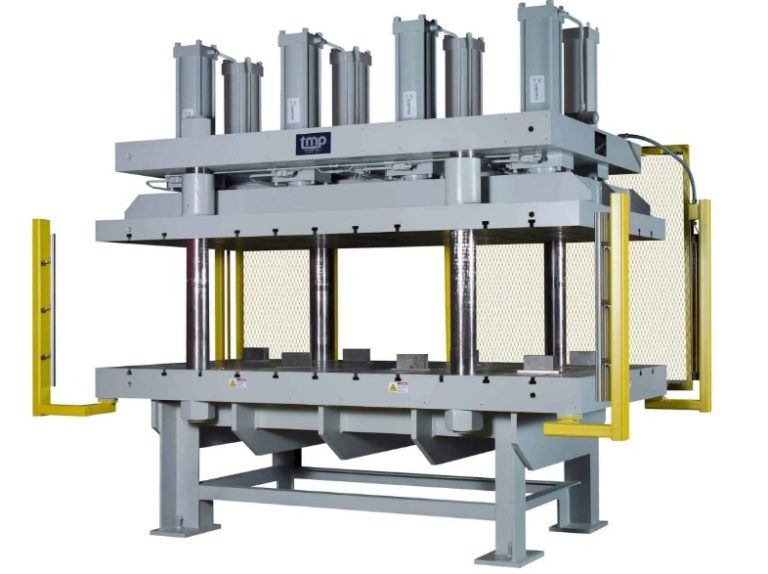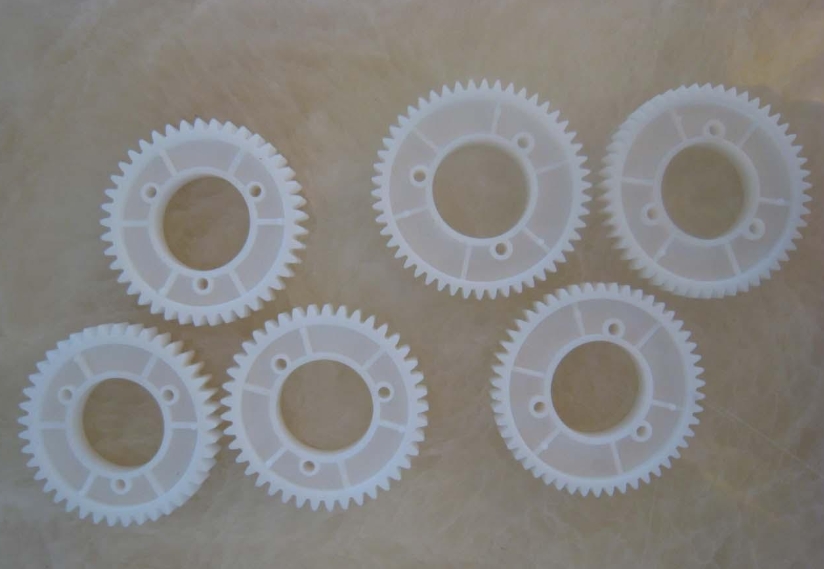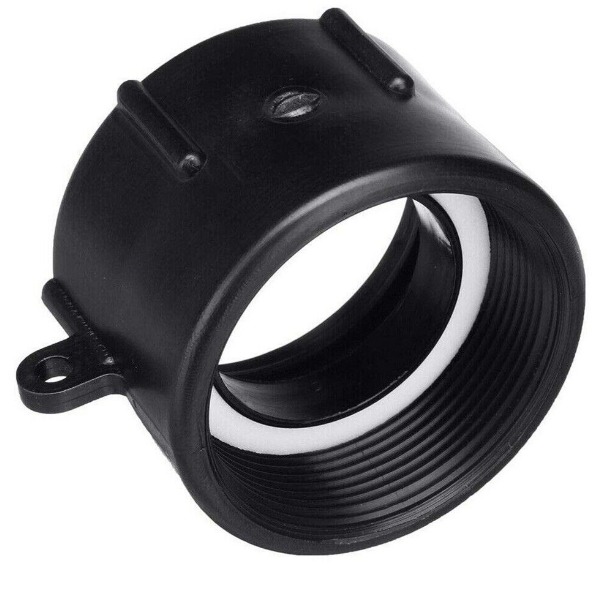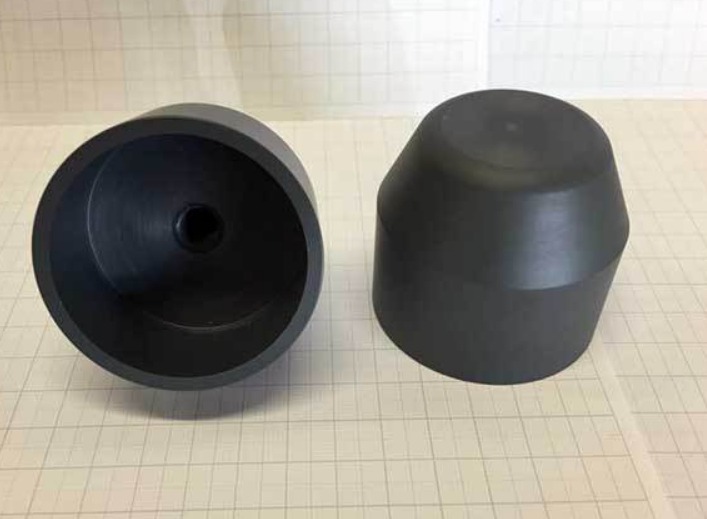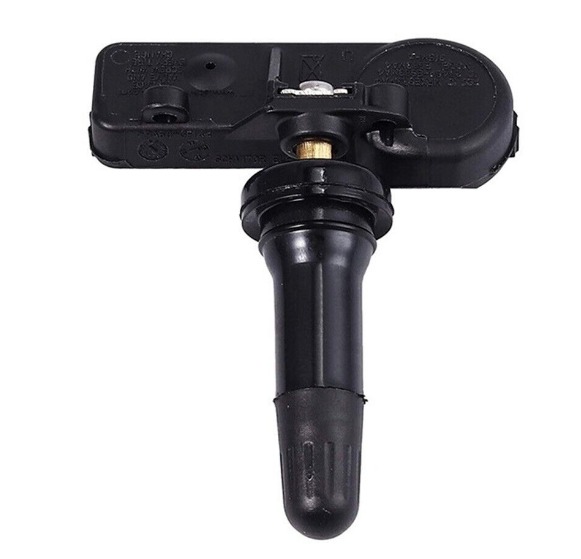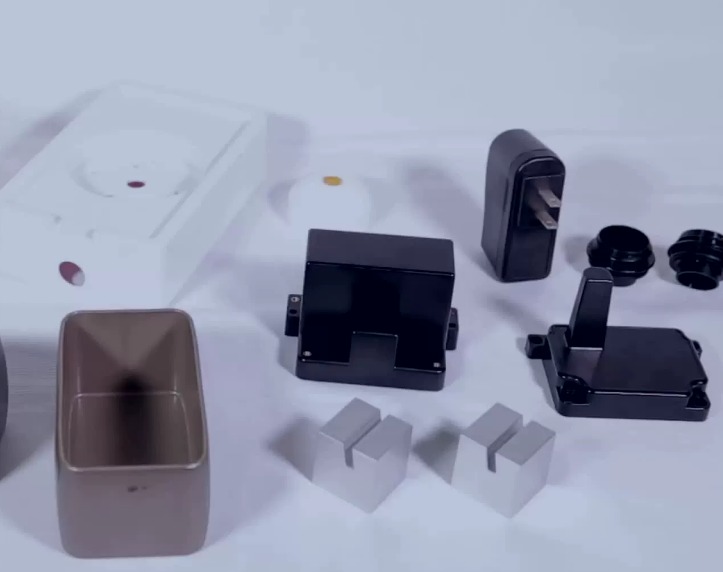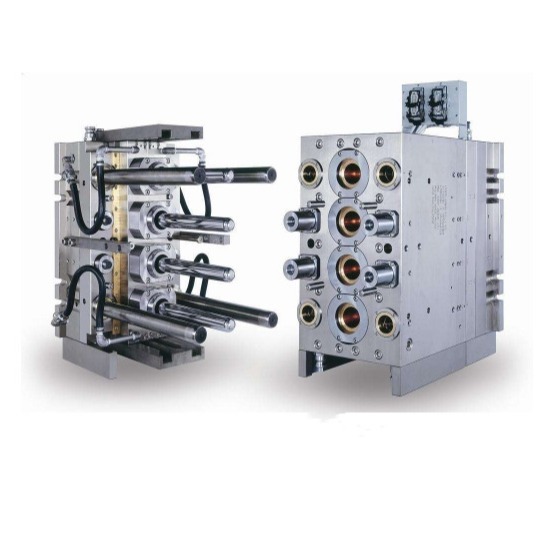What is Insert Molding Design?
Insert molding design is a specialized and innovative approach within the realm of plastic manufacturing. At its core, insert molding, also known as insert injection molding, is a process where pre - formed components, called inserts, are placed into a mold cavity before the injection of molten plastic. These inserts can be made from various materials such as metal, glass, or even another type of plastic.
The Working Principle
The process begins with the precise placement of the insert(s) into the mold. This step is crucial as any misalignment can lead to defects in the final product. Once the insert is in place, the mold is closed, and molten plastic is injected under high pressure. The plastic fills the remaining space in the mold, surrounding and bonding with the insert. As the plastic cools and solidifies, it forms a single, integrated part with the insert firmly embedded within it.
For example, in the production of an electronic device housing with metal inserts for screw threads, the metal inserts are first positioned in the mold cavities. The molten plastic is then injected, flowing around the inserts and taking the shape of the mold. After cooling, the result is a housing with built - in metal threaded inserts that can be used to assemble other components.
The Importance of Insert Molding Design
- Mechanical Strength and Functionality
- Insert molding allows for the combination of the strength and durability of materials like metal with the moldability and cost - effectiveness of plastic. This results in products that can withstand higher mechanical stresses. For instance, in automotive applications, plastic parts with metal inserts are used in components such as door handles. The metal insert provides the necessary strength to endure repeated use, while the plastic part offers design flexibility and weight reduction.
- It also enables the creation of parts with multiple functions. In electrical components, inserts can be used to provide electrical conductivity, while the plastic serves as an insulator.
- Design Flexibility
- Designers have more freedom to create complex shapes and structures. Inserts can be placed in strategic locations within the plastic part, allowing for the integration of features that would be difficult or impossible to achieve with traditional plastic molding alone. For example, in the production of a medical device, inserts can be used to create precise channels or cavities for fluid flow within a plastic housing.
- Assembly Efficiency
- By embedding inserts during the molding process, post - molding assembly steps such as screwing in metal components or attaching separate parts can be reduced or eliminated. This not only saves time but also reduces the risk of assembly errors. In the manufacturing of consumer electronics, like smartphones, insert - molded parts can streamline the production process, making it more efficient and cost - effective.
The Process of Insert Molding Design
Step 1: Material Selection
The choice of materials in insert molding design is crucial. For inserts, common materials include copper, aluminum, and steel. Copper, for example, is popular due to its excellent corrosion - resistance, good electrical conductivity, and relatively easy machinability. Aluminum is chosen for its lightweight properties, making it suitable for applications where weight reduction is a priority, such as in the aerospace and automotive industries. Steel offers high strength and hardness, which is ideal for parts that need to withstand heavy loads.
When it comes to plastic materials, factors like compatibility with the insert material, mechanical properties, and chemical resistance must be considered. For instance, if the insert is made of metal and the plastic needs to have good electrical insulation properties, materials like polyethylene (PE) or polypropylene (PP) can be good choices. However, if the product will be exposed to chemicals, a more chemically - resistant plastic such as polyvinyl chloride (PVC) might be more appropriate. The coefficient of thermal expansion of the plastic and the insert material should also be taken into account. A large difference in thermal expansion coefficients can lead to internal stress in the final product, potentially causing cracking or warping.
Step 2: Design Considerations
Shape and Size of Inserts
The shape of the insert should be as simple as possible, preferably circular or symmetric. For example, a circular metal insert in a plastic part will have more uniform shrinkage around it compared to an irregular - shaped insert. Sharp corners or edges on the insert should be avoided as they can cause stress concentration points in the plastic during the molding process, increasing the risk of cracking.
The size of the insert relative to the plastic part is also important. If the insert is too large compared to the plastic surrounding it, it can cause problems with plastic flow during injection. On the other hand, if it's too small, it may not provide the desired mechanical strength or functionality.
Placement of Inserts
The placement of inserts within the plastic part needs to be carefully planned. Inserts should be located in areas where they can best contribute to the product's function. In a mechanical component, inserts might be placed at points of high stress to reinforce the plastic. Also, the distance between inserts and the walls of the plastic part should be sufficient. A general rule of thumb is that the minimum distance from the insert to the plastic wall should be at least 1 - 2 times the diameter of a small insert. This ensures that there is enough plastic material to properly encapsulate the insert and that the structural integrity of the plastic part is maintained.
Step 3: Mold Design
Mold Structure
The mold structure for insert molding is more complex than that of traditional injection molding. It needs to accommodate the placement and fixation of the inserts. A typical mold for insert molding may have additional components such as insert holders or 定位 pins. These components ensure that the inserts are accurately positioned within the mold cavity before injection.
Parting Line
The parting line, which is the boundary where the two halves of the mold meet, should be designed to minimize the impact on the final product. It should be located in areas where it won't affect the functionality or appearance of the part. For example, if the product has a smooth outer surface, the parting line should not be placed in a visible area.
Gate Location
The gate, through which the molten plastic enters the mold cavity, plays a vital role in the filling process. The gate location should be chosen to ensure uniform plastic flow around the inserts. If the gate is placed too close to an insert, it can cause uneven pressure distribution, leading to insert displacement or poor plastic - insert bonding. A well - designed gate location can also help reduce the formation of weld lines and air traps in the final product.
Step 4: Insert Placement and Fixation
Insert placement in the mold can be done either manually or automatically. Manual placement is often used for small - scale production or when dealing with complex - shaped inserts. However, it is time - consuming and has a higher risk of human error. Automated placement, on the other hand, is more suitable for large - scale production. It uses robotic arms or automated feeding systems to place the inserts accurately in the mold, reducing errors and increasing production efficiency.
There are various methods for fixing inserts in the mold. For cylindrical inserts, they can be inserted into pre - drilled holes in the mold. Threaded inserts can be held in place by matching threaded holes in the mold. Some inserts may also be fixed using magnetic forces or mechanical clamps. Ensuring proper fixation is essential to prevent the insert from moving or rotating during the injection process, which could result in defective products.
Step 5: Injection Molding Process
Temperature Control
The temperature of the molten plastic and the mold has a significant impact on the quality of the final product. The melting temperature of the plastic should be carefully set according to the type of plastic being used. For example, high - density polyethylene (HDPE) typically has a melting temperature range of 120 - 160°C. If the temperature is too low, the plastic may not flow properly around the inserts, leading to incomplete filling or poor bonding. If it's too high, the plastic may degrade, losing its mechanical properties.
The mold temperature also affects the cooling rate of the plastic. A lower mold temperature can lead to faster cooling, which may cause internal stress and warping in the product. A higher mold temperature, on the other hand, can result in better surface finish and reduced internal stress but may increase the cycle time.
Pressure and Speed
The injection pressure is the force used to push the molten plastic into the mold cavity. It needs to be sufficient to ensure that the plastic fills the cavity completely, especially around the inserts. However, excessive pressure can cause the inserts to move or deform. The injection speed also plays a role. A too - fast injection speed can create turbulence in the plastic flow, leading to air entrapment and the formation of voids in the product. A slow injection speed may result in long cycle times and incomplete filling. Therefore, finding the right balance between pressure and speed is crucial for achieving high - quality insert - molded products.
Applications of Insert Molding Design
Insert molding design has found extensive applications across various industries due to its unique capabilities in combining different materials and enhancing product functionality.
Automotive Industry
In the automotive sector, insert molding is widely used. For example, in the production of car interiors, plastic components with metal inserts are used for handles, knobs, and control panels. Metal inserts provide the necessary strength for repeated use, while plastic offers a lightweight and cost - effective solution. According to industry reports, over 70% of modern car interiors contain at least one insert - molded component. In engine parts, inserts can be used to improve the heat resistance and mechanical strength of plastic components. This helps in reducing the overall weight of the engine while maintaining its performance, contributing to better fuel efficiency.
Medical Industry
The medical industry benefits greatly from insert molding design. In the production of medical devices, inserts are often used to create precise channels for fluid flow within plastic housings. For instance, in syringes, plastic barrels with metal or plastic inserts are used to ensure accurate dosing. These inserts can also be used to provide electrical conductivity in some medical monitoring devices, where the plastic part serves as an insulator. Insert - molded components in medical devices must meet strict quality and safety standards, and insert molding allows for the production of high - precision, sterile - friendly parts.
Electronics Industry
Insert molding is crucial in the electronics industry. In the manufacturing of smartphones, tablets, and laptops, insert - molded parts are used to integrate metal components such as connectors, screws, and heat sinks into plastic casings. This not only improves the structural integrity of the device but also helps with heat dissipation and electrical connectivity. For example, the metal inserts in the frame of a smartphone can enhance its durability, while the plastic casing provides protection against electromagnetic interference. A study shows that about 80% of electronic devices on the market today use insert - molded components in their design.
Aerospace Industry
In aerospace, where weight reduction and high - strength materials are essential, insert molding plays a significant role. Metal inserts in plastic components are used in aircraft interiors, such as seat components and cabin panels. These inserts can also be found in some non - critical structural parts of the aircraft, where they help to reduce weight while maintaining the required strength. For example, inserts made of lightweight metals like aluminum are used in plastic parts to achieve a balance between weight and mechanical properties. The aerospace industry demands the highest quality standards, and insert molding design has proven to be a reliable solution for meeting these requirements.
Yigu Technology's Perspective
As a non - standard plastic metal products custom Supplier, Yigu Technology deeply understands the significance of insert molding design. With years of experience in the field, we believe that precise material selection and innovative mold design are the keys to successful insert molding.
Our team of experts is proficient in handling various materials, ensuring that the combination of inserts and plastics not only meets the functional requirements but also withstands long - term use. For mold design, we use advanced CAD/CAM technology to create highly precise molds that can accurately position inserts and optimize plastic flow. This results in high - quality products with excellent dimensional accuracy and reliable performance.
In addition, we focus on continuous improvement in the insert placement and fixation process. Our automated production lines can efficiently and accurately place inserts, reducing errors and improving production efficiency. We are committed to providing customers with one - stop solutions for insert - molded products, from design to production, to meet the diverse needs of different industries.
FAQ about Insert Molding Design
What are the common materials used for inserts in insert molding?
Common materials for inserts in insert molding include brass, aluminum, and steel. Brass is popular because it does not rust, is corrosion - resistant, easy to machine, and has a moderate price. Aluminum is chosen for its lightweight properties, which is beneficial in applications where weight reduction is crucial, such as in the aerospace and automotive industries. Steel offers high strength and hardness, making it suitable for parts that need to withstand heavy loads. The choice of insert material depends on factors like the product's function, required mechanical properties, and cost - effectiveness. For example, if the product needs to have good electrical conductivity and corrosion resistance, brass might be a better choice, while for a high - strength component in a mechanical device, steel could be more appropriate.
How to prevent the insert from moving or deforming during the injection molding process?
To prevent the insert from moving or deforming during injection molding, several measures can be taken. Firstly, optimize the mold design. Use insert holders or 定位 pins to accurately position the inserts within the mold cavity. For example, cylindrical inserts can be inserted into pre - drilled holes in the mold, and threaded inserts can be held in place by matching threaded holes. Secondly, ensure proper fixation methods. Some inserts can be fixed using magnetic forces or mechanical clamps. In addition, when placing inserts, make sure they are firmly held in position. For automated placement, use reliable robotic arms or feeding systems to improve accuracy. Also, adjust the injection parameters properly. Excessive injection pressure can cause inserts to move or deform, so finding the right balance of pressure and speed is essential.
What are the main factors affecting the quality of insert - molded products?
The main factors affecting the quality of insert - molded products include material selection, process parameters, and mold design. Material selection is crucial. The compatibility between the insert material and the plastic material is important. A large difference in thermal expansion coefficients between the two can lead to internal stress in the final product, potentially causing cracking or warping. Process parameters such as temperature, pressure, and injection speed also play a significant role. Incorrect temperature settings can result in improper plastic flow or degradation, while inappropriate pressure and speed can cause issues like incomplete filling, insert displacement, or the formation of voids. Mold design affects the quality as well. The mold structure should be able to accurately position and fix the inserts. The parting line and gate location need to be carefully designed to ensure uniform plastic flow and minimize the impact on the final product's appearance and functionality.
